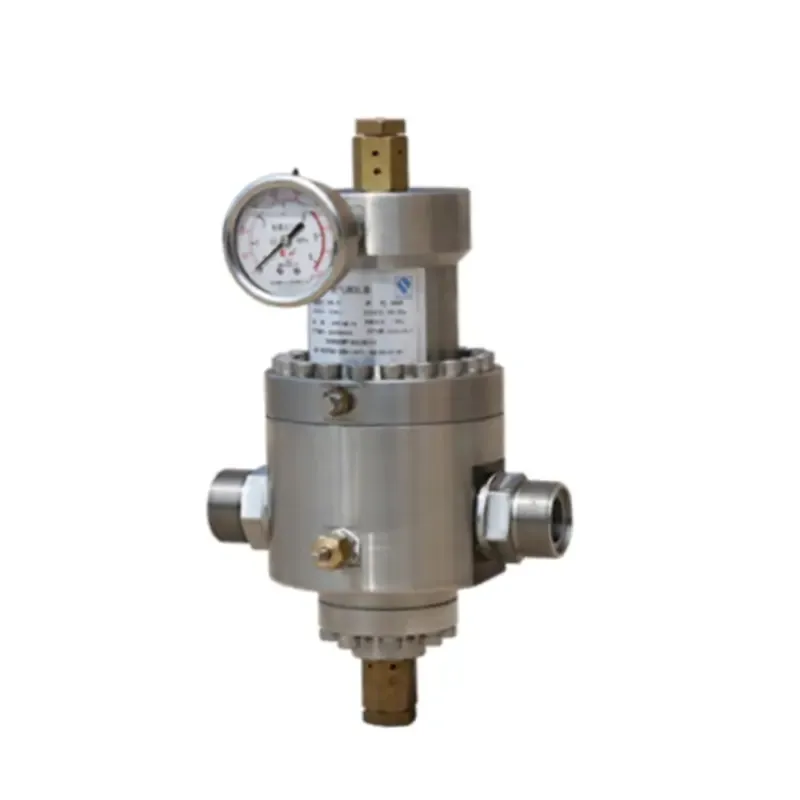
Nov . 19, 2024 12:54
Back to list
Thermal Exchange Systems for Efficient Energy Transfer Solutions
Understanding Heat Exchangers Principles and Applications
Heat exchangers are essential devices used in various industries for transferring heat between two or more fluids without mixing them. They play a vital role in energy conservation and efficiency in systems ranging from power plants to refrigeration units. This article explores the principles, types, and applications of heat exchangers, shedding light on their importance in modern technology.
Principles of Heat Exchange
At its core, a heat exchanger operates on the principle of thermal conduction, where heat is transferred from a hotter fluid to a cooler one. The process occurs through a solid barrier that separates the two fluids, allowing thermal energy to flow from the high-temperature side to the low-temperature side. This transfer continues until thermal equilibrium is reached or until the desired temperature changes have been achieved.
The efficiency of heat exchange is influenced by several factors, including the temperature difference between the fluids, the heat transfer surface area, and the properties of the fluids involved. Engineers often use various configurations and materials to enhance the efficiency of heat exchangers, ensuring optimal heat transfer rates while minimizing energy losses.
Types of Heat Exchangers
There are several types of heat exchangers, each designed for specific applications and operational requirements. The most common types include
1. Shell and Tube Heat Exchangers These consist of a series of tubes, one set carrying the hot fluid and the other carrying the cold fluid. The design allows for high pressure and temperature applications, making it ideal for oil refineries and power plants.
2. Plate Heat Exchangers These are made up of thin, corrugated plates that provide a large surface area for heat exchange. They are compact, lightweight, and used in applications such as food processing and HVAC systems.
.
4. Double Pipe Heat Exchangers This simpler design consists of one pipe inside another, with hot fluid in one pipe and cold fluid in the annular space. They are suitable for low-capacity applications and are often used in laboratory setups.
مبادل حراري

5. Fin-tube Heat Exchangers With fins integrated into the tube surfaces, these exchangers increase the surface area for heat transfer, improving efficiency. They are commonly found in automotive radiators and air conditioning systems.
Applications of Heat Exchangers
Heat exchangers are ubiquitous in industrial and commercial applications. Their primary uses include
- Power Generation In power plants, heat exchangers play a crucial role in recovering waste heat, improving overall energy efficiency. They are vital in steam power cycles, where they transfer heat from combustion gases to water, producing steam for turbines.
- Chemical Processing In the chemical industry, heat exchangers are used to control temperatures during reactions, cooling heated products before further processing, and recovering heat from exothermic reactions.
- HVAC Systems In heating, ventilation, and air conditioning (HVAC) systems, heat exchangers help in maintaining indoor temperature by transferring heat from indoor air to the refrigerant and vice versa.
- Food and Beverage Industry Heat exchangers are employed in pasteurization processes, where heating is necessary to kill harmful bacteria without compromising the quality of food products.
- Renewable Energy In solar thermal systems, heat exchangers are used to transfer heat from solar collectors to water or other fluids, enhancing the efficiency of energy capture and use.
Conclusion
Heat exchangers are pivotal in enhancing energy efficiency across a wide range of applications. By facilitating the transfer of thermal energy between fluids, these devices contribute to the sustainability efforts of industries seeking to minimize energy consumption and waste. As technology continues to evolve, innovations in heat exchanger design and materials will further enhance their performance, ensuring their relevance in an increasingly energy-conscious world. Understanding their principles, types, and applications is crucial for engineers and professionals striving to optimize thermal management in various systems.
Latest news
-
Safety Valve Spring-Loaded Design Overpressure ProtectionNewsJul.25,2025
-
Precision Voltage Regulator AC5 Accuracy Grade PerformanceNewsJul.25,2025
-
Natural Gas Pressure Regulating Skid Industrial Pipeline ApplicationsNewsJul.25,2025
-
Natural Gas Filter Stainless Steel Mesh Element DesignNewsJul.25,2025
-
Gas Pressure Regulator Valve Direct-Acting Spring-Loaded DesignNewsJul.25,2025
-
Decompression Equipment Multi-Stage Heat Exchange System DesignNewsJul.25,2025

